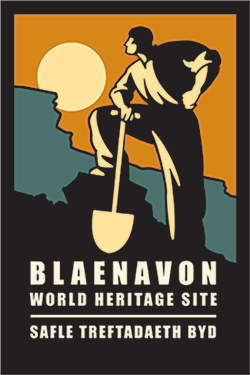Self Led Visits
The Centre’s interpretative layout was overseen by leaders in exhibition design and its content was developed over a two year period as a product of painstaking research and consultation with teachers. Narratives are delivered through the words of historical characters so that everyone can gain an insight into the daily lives of ordinary people and understand the changes that they experienced during the 19th century.
Self-led visits to explore the Blaenavon World Heritage Centre are free of charge.
Centre Learning Tools
Victorian Classroom
An all new replica Victorian classroom has been created to pay homage to the World Heritage Centre’s past as the first free workers school in Wales. Built as a late Victorian classroom, pull down maps, pictures, school desk and benches all make the experience complete. To bring the classroom into the modern era, there is a Smart board with 2 films (available in English and Welsh) showing Victorian children’s experiences at St Peter’s School. Costumes for both teachers and children are available (with prior booking) as well as a range of interactive objects. A fun session can be held for all ages.
Cost: Free
To book this classroom, please see facilities and booking.
Object Handling
Come and use our amazing object handling real objects you can touch and play with. Compare and contrast the lives of the people of Blaenavon from the 19th century to the 20th century. Explore the differences between poor and rich people.
Curriculum Links: Literacy, Numeracy, Geography, History, Science
Cost: Free
Max Numbers: 30 per group
Interactive Touch-Screens
The focus of the World Heritage Centre’s exhibition space consists of eight touch-screen stations, each providing opportunities for students to explore six topics including living and working conditions during the 19th century, transport, the making of iron, geology and World Heritage.
For the topic of living conditions, students can investigate a week in the life of a child in the 19th century recounted as a first-person narrative and compare the contents of an ironworker’s cottage with an ironmaster’s mansion. There is also a ‘living wage’ game where students can try to manage a household budget on an ironworker’s wage.
On 19th century working conditions, students can investigate different jobs carried out by ordinary people during the Industrial Revolution and explore the role of an air-door boy (trapper), a drammer and a young collier in the 19th century. There is also a game where students can spot the dangers in the 19th century workplace.
On the theme of transport, students can compare the changing forms of transport from the days before the building of canals and railroads through to the 19th century with reference to the routes used to move iron and coal from Blaenavon to Newport.
For the topic of iron making, students can learn about the raw materials that were needed to make iron and discover how a blast furnace worked. They can also investigate how pig iron was refined and watch an animation of the entire iron-making process at Blaenavon World Heritage Centre.
On the topic of geology, students can find out about how coal and ironstone were formed.
By exploring the theme of World Heritage, students can find out how World Heritage Sites are selected. A game – ‘Where in the World?’ – gives students an opportunity to explore different World Heritage Sites around the globe.
Graphic Panels
Displayed around the walls of the exhibition space are a series of graphic panels set out along a timeline which illustrate the changes that Blaenavon underwent during the 18th, 19th and 20th centuries. Exploration of the wall-mounted displays will help students to develop their chronological awareness and historical knowledge and understanding of this area from the Industrial Revolution up to the present day. Text is written in such a way as to be accessible to a KS2 audience. A dedicated set of topic based pupil worksheets are available to support an exploration of this resource as well as the touch-screen software in order to focus students’ attention.
Audio Stations
Featured within the exhibition space are two audio-stations which provide students with an opportunity to listen to first-hand testimonies by older residents of Blaenavon on various topics. These include: growing up and children’s games in the 1920s and 30s; Sunday schools; St. Peter’s school; housing and living conditions; the 1926 miners’ strike; and the town of Blaenavon.
Audio-visual Theatre
The main exhibition area is complemented by a small theatre that feature films of 5 minutes duration; one examines the development of Blaenavon’s Industrial Heritage whilst the other, focuses on World Heritage Sites. Both films contribute to the Curriculum Cymreig and PSE by helping students to understand the factors that have shaped Wales as well as exploring the theme of global citizenship.

